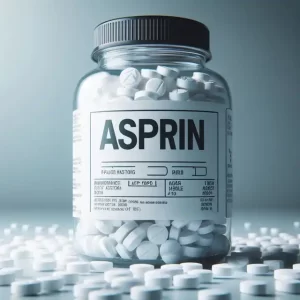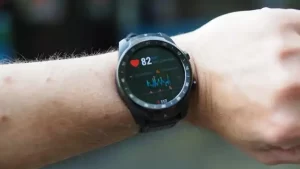COVID-19 Omicron: Loss of smell dropped to 17% and sore throat increased to 70.5%
- Aspirin: Study Finds Greater Benefits for These Colorectal Cancer Patients
- Cancer Can Occur Without Genetic Mutations?
- Statins Lower Blood Lipids: How Long is a Course?
- Warning: Smartwatch Blood Sugar Measurement Deemed Dangerous
- Mifepristone: A Safe and Effective Abortion Option Amidst Controversy
- Asbestos Detected in Buildings Damaged in Ukraine: Analyzed by Japanese Company
COVID-19 Omicron: Loss of smell dropped to 17% and sore throat increased to 70.5%
- Red Yeast Rice Scare Grips Japan: Over 114 Hospitalized and 5 Deaths
- Long COVID Brain Fog: Blood-Brain Barrier Damage and Persistent Inflammation
- FDA has mandated a top-level black box warning for all marketed CAR-T therapies
- Can people with high blood pressure eat peanuts?
- What is the difference between dopamine and dobutamine?
- How long can the patient live after heart stent surgery?
COVID-19 Omicron: Loss of smell dropped to 17% and sore throat increased to 70.5%! The Lancet: Omicron symptoms and duration have changed dramatically!
We all know that Omicron is highly contagious and has mild symptoms, but so far no study has reported in detail what symptoms, duration of symptoms, and differences compared with previous virus strains will occur after infection with Omicron. Especially when most people have been vaccinated against the COVID-19.
On April 7, 2022, The Lancet published a large UK study revealing symptoms, duration of symptoms, hospitalisation rates and pre-existing vaccinated populations infected with Omicron (at least two doses). What is the difference between the different strains of the virus , I hope it can provide a reference for the formulation of public health policies for Omicron.

The data for this study comes from a mobile app called ZOE in the UK that collects information about users’ COVID-19 infections. Between June 2021 and January 2022, more than 63,000 people aged 16-99 were on the app. Submitted their symptoms of COVID-19.
The researchers defaulted to delta infections for cases of infection from 1 June 2021 to 27 November 2021, a time period when the prevalence of the delta strain in the UK was over 70%, and from 20 December 2021 to 2022 The infection case on January 17 was Omicron infection, at which time Omicron basically replaced Delta as the mainstream strain.
The Omicron-infected and Delta-infected patients were matched 1:1 by age, gender, and vaccination status. The study finally included 4,990 Omicron-infected and Delta-infected patients.
According to the results of the report, the most common symptoms of Omicron patients were: runny nose (76.5%), headache (74.4%), sore throat (70.5%), sneezing (63.0%), persistent cough (49.8%) , hoarse voice (42.6%).
Compared with the symptoms of delta infection, Omicron infection has two main characteristics:
- One, anosmia has decreased, with only 17% of Omicron-infected individuals experiencing anosmia , compared with 52.7% of Delta-infected individuals.
- Second, the incidence of sore throat and hoarseness increased significantly, and the risk of sore throat and hoarseness in Omicron patients was 55% higher than that in patients with delta infection (OR 1 55, 95% CI 1 ·43–1·69 [p<0·001]) and 24% (1·24, 1·14–1·34 [p<0·001]).
Fortunately, some debilitating symptoms, such as brain fog, sore eyes, dizziness, high fever, etc., have also decreased in Omicron-infected people compared with previous strains, which is also in line with our understanding of Judgment of Omicron’s mild symptoms.

In terms of hospitalization rate, the hospitalization rate of Omicron infected patients who received more than 2 doses of vaccine within 7 days before and after the positive COVID-19 test result was 1.9%, while the hospitalization rate of Delta patients who were also vaccinated was 2.6%.
In other words, the risk of hospitalization after infection with Omicron was 25% lower than that of Delta (OR 0.75).
Delta infected people experienced an average of 8.89 days from the onset of symptoms to disappearance, compared with 6.87 days for Omicron infected people, and the duration of symptoms was nearly 2 days less.
The gap was even more pronounced among infected people who received 3 doses of the vaccine, with an average of 4.40 days of symptom duration for Omicron patients who received a booster shot, compared with 7.71 days for Delta-infected patients, a difference of 3.3 days.
Overall, Omicron-infected patients who received more than two doses of the vaccine were more than twice as likely to recover within a week than Delta-infected patients (OR 2.49 95% CI 2 10–2 ). 95), which also shows that it is very necessary to receive the COVID-19 vaccine.
 Legend: Overall, the duration of symptoms in Delta and Omicron infected patients who received 2 doses of vaccine and 3 doses of vaccine
Legend: Overall, the duration of symptoms in Delta and Omicron infected patients who received 2 doses of vaccine and 3 doses of vaccine
The researchers also mentioned that although the time covered by this study was before the Omicron BA.2 variant swept the world, from the latest data collected by the APP, the symptoms of BA.2 and BA.1 did not change.
This is the largest peer-reviewed study on the comparison of symptoms and duration of infection between Omicron and Delta.
It proves that Omicron has changed the infection symptoms compared with the previous strain, and the infection The recovery time of the infected person is shorter, which means that the infectious period of the infected person may be shorter.
References
[1]Symptom prevalence, duration, and risk of hospital admission in individuals infected with SARS-CoV-2 during periods of omicron and delta variant dominance: a prospective observational study from the ZOE COVID Study DOI:https://doi.org/10.1016/S0140-6736(22)00327-0
COVID-19 Omicron: Loss of smell dropped to 17% and sore throat increased to 70.5%
(source:internet, reference only)
Disclaimer of medicaltrend.org
Important Note: The information provided is for informational purposes only and should not be considered as medical advice.



